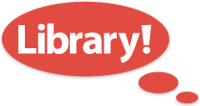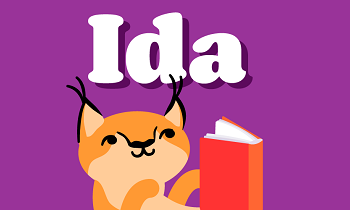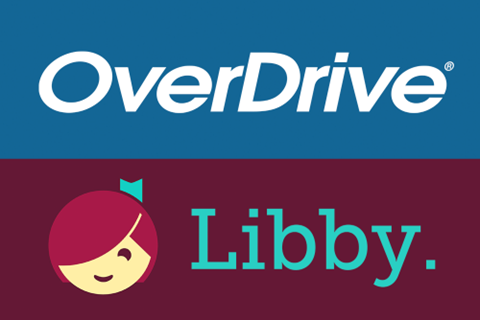Finding Books and Resources
We want to make sure every reader and learner finds materials and resources that are right for them. As a public library, we strive to provide books and materials that reflect the diversity of our community. With so many items to choose from, we're here to help you find books that are right for you and your family. Here are some tips, tricks, and tools, to guide you on your next great reading adventure.
Guide for Parents and Families
As a parent or caregiver, you are your child’s first and best teacher. You should feel empowered to set parameters that are right for your family. It is your role to discuss with your child what is and is not appropriate for them to read, view, and listen to.
As a public library, it is our responsibility to include materials in our collection that meet the needs of all the different people in our community. We strive to have something for everyone! With that in mind, every family is different. What is just right for some community members and some families may not be appropriate for others.
One way we assist parents and caregivers to select books and materials for their children is by organizing materials based on age or reading levels. Finding the right grouping for your family is a great start to finding the next great read!
Board Books
These books have sturdy pages and are intended to help infants learn what a book is and how one is used. Most board books have minimal words on the page and lots of interaction between readers and listeners. They are aimed at helping babies connect word sounds with complete words and objects, and often feature repetition or rhyming.
Picture Books
Picture books combine beautiful art with complex plots to create stories that are best enjoyed when adults read to children. Listening to picture books over and over again helps children learn new words. Picture books can also help adults discuss important topics with younger children, like feelings or world events, by using stories
EZ Readers
EZ readers help kids learn to read by linking the words they say with what they see written on a page. There are few words on each page, and words are repeated often so kids can practice. EZ readers generally come in four levels so that new readers can read harder books as they get ready to move into chapter books. Keep in mind, these four levels can be a bit different depending on the publisher. Try this trick to find the best EZ reader book for your kid's reading level: if they struggle to read more than three words on a page, the book is probably too hard for them.
Chapter Books
Chapter books are a great way for kids to keep reading on their own. Chapter books start small (under 50 pages) and get bigger as reading improves. Chapter books help kids practice telling a story from start to finish in a clear order.
Graphic Novels
Graphic novels are another way for kids to practice storytelling skills. Graphic novels tell complex stories from start to finish like a chapter book, but use artwork as a part of the story. Graphic novels are sometimes confused with comic books, which also use artwork to tell a story. Comic books, however, tell many short stories that are less than a page long, rather than one long story.
Children's Books
Books in the children's section have content for everyone from babies to tween readers. Books with fewer pages are generally limited to what babies and younger children might experience. As books get longer, the topics generally become more difficult or mature for older kids.
Teen Books
Books in the teen section of the library have content that is best for middle and high school readers. Some books, geared toward older teens, may have violence, swearing and sexual content. Topics are generally limited to what a middle or high school reader might experience.
Get Recommendations
Our trained and experienced library staff are here to help you navigate the library’s collection so that you may find something that is just right for your child or teen. Our staff wants to make sure you have the information you need to select the materials you want. We can talk with you about your family’s reading, viewing, and listening values. This is also an opportunity for you to tell us about any subject matter you would like to avoid. This will help us identify items in the collection that specifically meet your family’s needs, interests, and standards.
For You
There is something for everyone at the library! We have books, movies, TV shows, resources, events and more. Here are just a few ideas by age group to get you started.
For Kids
For Teens
For Adults
Tips and Tricks
There are several approaches to check if a selected book or item will meet your expectations. Here are a few tips and tricks. (Download as PDF)
- Personalized Picks - Use our Personalized Picks Service, and we'll send you a list of books you might like or have a stack waiting for you to check out.
- Ask a librarian! We love to connect people with their next favorite read - and we've generally read a few books ourselves. Connect with us online or at a library branch!
- Novelist - Both Novelist Plus and Novelist K-8 Plus are great tools to find books similar to ones you've read in the past.
- Common Sense Media: This website reviews movies, books, and games for violence, sex, swearing, positive role models, positive messages, educational value and more.
- Does the Dog Die: This website warns you about emotional spoilers (like the dog dying in the end) for movies, TV shows, and books.
- Amazon.com: Use the Look Inside feature on most print (not digital) books to search how many times certain words occur in a book. Do a search for swear words, body parts you might find in sex scene, blood, etc., to see if the book aligns with your preferences.
- DO judge a book by its cover! Sometimes you can tell if a book is going to have a scene you're not interested in reading just from what you see in the cover art.
- Graphic Novel Ratings: Many graphic novels will have a rating (like you would see on a video game) next to the ISBN barcode on the back cover, or inside the front cover of a book.
- Romance Novels: Try the 2/3 trick. Most romance novels will have a racy scene about 2/3 of the way through a book, if they're going to have one at all.
- Mysteries: Mysteries fall into subcategories that can be very different. Cozy mysteries are light and generally have a funny title and an animated cover. Noir (literally: black/dark) mysteries are violent and scary and usually have dark covers with few pictures. Everything else in the middle has covers that look a lot like any other fiction cover.
Download Guides for Finding Materials
Download the information on this page for finding materials for kids, teens and your family as PDFs guides.



